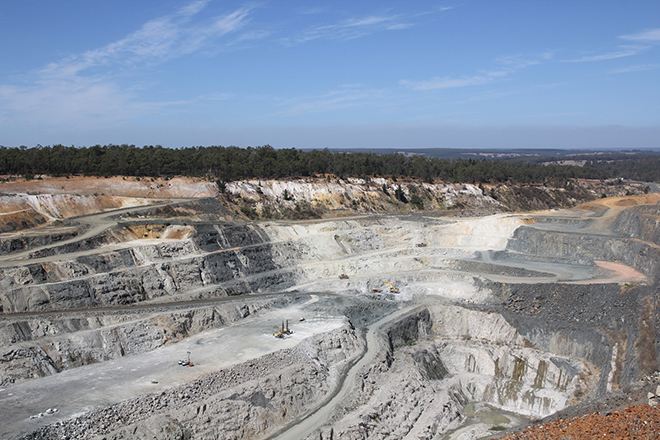Tesla wants to support Australian miners critical to facilitating the country’s involvement throughout the electric vehicle supply chain, including possible EV manufacturing.

Tesla Chairman Robyn Denholm voiced support for the country’s mining sector at the Minerals Council of Australia event in Canberra, the nation’s capital. Denholm is an Australian who was appointed chair of the Tesla board in November 2018, after joining in 2014.
Denholm said the carmaker expects to increase spending on Australian minerals to more than $1 billion per annum “in the next few years.” This is because “at the heart of everything we do in our quest to accelerate the transition to sustainable energy is the lithium-ion battery,” for which demand will grow at 37% CAGR in the decade ahead, Denholm said, citing estimates by consultancy McKinsey & Co.
Three-quarters of Tesla’s lithium feedstock and over one-third of its nickel is sourced from Australia, the chair said. The cost of the materials comprise most of the battery costs, while the cathode is the most expensive part of the battery and most of the fixed costs are from nickel and lithium. Denholm said:
“All up, there’s about $6,000 worth of minerals and metals in every EV, $2,000 of which are for the batteries, and Australia is capable of supplying almost all of it.”
Tesla wants to work with attendees at the conference, many of whom were mining executives, to “seize this enormous economic and environmental opportunity” in EVs and battery storage. Denholm said:
“A values-led mining industry has greater value to Tesla and an increasing portion of the global marketplace.”
Expansion plans
Tesla’s statement signaled the significance of Australia’s supply of lithium raw materials in meeting the company’s expansion plans as its Shanghai factory is set to expand further and construction continues at its Berlin factory, said Alice Yu, senior metals analyst at S&P Global Market Intelligence. Benchmark Mineral Intelligence analyst Caspar Rawles said:
“While $1 billion sounds like a huge amount of money, we’re just talking about the raw materials alone.”
According to Rawles, $1 billion is roughly equivalent to 77,000 tonnes of lithium carbonate equivalent, using Benchmark’s most recent global weighted-average lithium hydroxide price of $12,978/t. However, Rawles said:
“If you’re also looking at the nickel, cobalt and other raw materials, like graphite, you very quickly get to that number.”
EVs account for less than 1% of vehicles globally, and that needs to be “much closer to 100%” within 30 years to reach net-zero emissions, according to Denholm. The global lithium-ion battery market is forecast be worth about $400 billion by 2030, eight times the revenue generated from Australian coal exports in 2020, the chair added.
Downstream move
Denholm called on Australian mining companies to process battery raw materials locally, which would enable significant environmental and commercial benefits. Denholm said:
“Mining processes currently account for about half the carbon footprint of a battery cell, and the best way to reduce the carbon footprint of minerals is to stop shipping them between 6,000 and 9,000 kilometers of ocean before refining them.”
There would be 10 times less carbon pollution if Australia’s spodumene was converted to lithium chemicals in Western Australia, the chair said. In addition, refined lithium weighs much less than the raw material and is therefore cheaper to transport to end users.
The calcination step in refining is also energy intensive and is mostly done offshore with coal-based energy grids, whereas it could be done in Australia with renewable energy from a cleaner grid, more modern plants and a shorter supply chain, Denholm added.
Though Australia was the world’s top lithium producer in 2020 with a 49% market share, Denholm noted that the country exported 0% of the refined product suitable for battery cells to generate greater margins.
Australia’s government has said spodumene exports are tipped to rise from 1.6 million tonnes in fiscal 2021 to 3.9 Mt in fiscal 2026, with planned expansions at Western Australia’s Greenbushes mine and associated downstream lithium hydroxide plants under construction.
Sociedad Química y Minera de Chile SA and Wesfarmers also recently updated a feasibility study on the Mount Holland deposit in Western Australia and its associated Kwinana lithium hydroxide refinery.
The development of lithium hydroxide capacity in Australia is beneficial to automakers such as Tesla, which will be able to use the material directly in the battery cathode making process, Yu said.
Tesla was reportedly in talks with BHP Group for a nickel supply deal in 2020. And Future Battery Industries CRC is repurposing BHP Group’s battery-grade nickel sulfate test plant in Perth into a pilot plant for cathode precursor production to demonstrate Australia’s ability to contribute to the EV supply chain midstream.
Denholm helped set up a car factory for Toyota Australia in Altona, Victoria, in the 1990s and said that while Australia could manufacture full EVs at that scale some day, batteries would be a good starting point. Denholm said:
“Australia can make great things, the foundations of which are laid by the Australian mining industry.”
Source: Tianqi Lithium Australia


 Copyright 2021 All rights reserved.
Copyright 2021 All rights reserved.